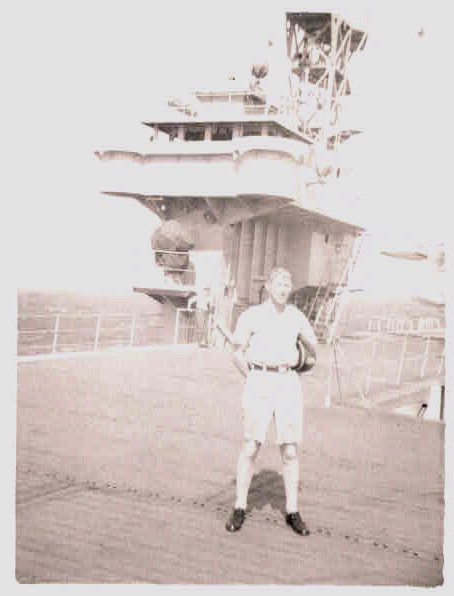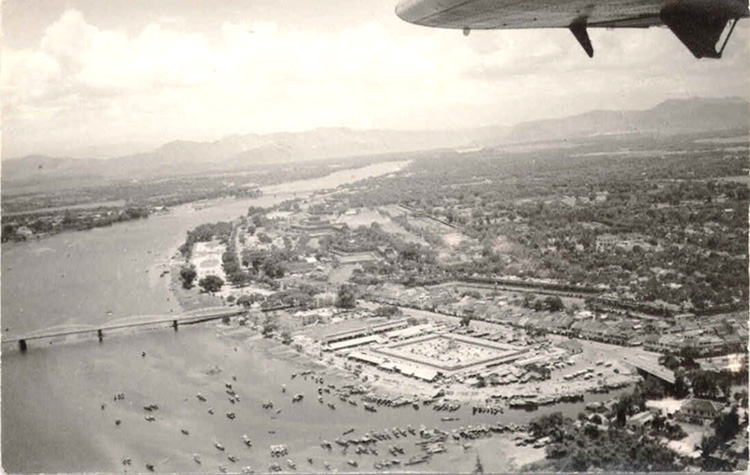LOW – SLOW - RELIABLE
18th AVIATION COMPANY (OTTER)
By: Jack Serig, Sr.
Ft. Riley, Kansas was the home of the BIG RED ONE (1st
Infantry Division) when I was assigned there from Germany in late 1959.
The first year at Riley was a ground duty assignment with
an infantry training company, which was a career necessity and one
that we thoroughly enjoyed. Hungry to get back into a flying assignment,
my request for transfer to the 18th Aviation Company (Otter)* was approved.
Upon reporting, the commanding officer advised of my pending assignment
as a Flight Platoon Leader. A few weeks later a summons to his office
revealed a change of plans. I was to replace his departing, school-trained
aircraft maintenance officer, i.e., Service Platoon Commander. Protesting
that I was not maintenance qualified was to no avail.
While settling in and getting acquainted with the platoon
members, and in discussions with unit pilots and crews, a serious problem
was brought to my attention for resolution. In the previous 18 months
a total of 12 unit Otters had either been involved in emergency forced
landings, or precautionary landings, due to total or partial loss of engine
power.
Our platoon team, consisting of Platoon Sergeant Snyder,
Flight Line Chief Holly, Technical Inspector Helbing, and myself, were
determined to solve the problem. We began by in-depth reviews of aircrafts’
maintenance histories, precautionary and forced landings’ reports and more
discussions with crewmembers involved in the mishaps. Each of the incidents
was thoroughly examined based on available documentation and recollections
by crews.
Incidentally, our Otter unit was blessed with a great
group of remarkably experienced aviators, many with Korean and World War
II service. Those at the controls at the time of the 12 potential mishaps
had saved all 12 without damage, destruction, injuries or loss of life.
Some help was provided by the lay of the terrain in the general area we flew
in, the relatively flat parts of Kansas, Oklahoma and Texas. Our guys
had been setting planes down in corn and wheat fields and off the ends of
runways, when engine power was reduced or completely lost.
As a result of extensive, and intensive, priority research
our team developed evidence of three separate, potentially dangerous problems.
First, in some power losses, records revealed cracks between the spark plug
holes in the engines’ cylinders. Second push-pull rods were bending
beyond tolerances or ball ends were failing. And third, cylinders were
not factory stamped with the number of hours they had accumulated at their
previous overhauls. Consequently, total cylinder hours could not be
determined and cylinders, aged beyond their design limits, were failing.
It was decided between our unit’s staff and the staff
of our third echelon maintenance support company, the 339th, with the concurrence
of the battalion commander and staff, that we would tear down three Otter
engines, those with the most hours since rebuild. The 339th crews,
supported by the Otter crew chiefs, began day and night crew shifts to expedite
the process of determining the existing condition of our fleet of engines,
nineteen in all. Within several weeks we had indisputable evidence
that our research findings were supported by the engine teardown findings
learned in the 339th shop. An average of 33% of cylinders and/or push-pull
rods failed to meet the criteria spelled out in the technical manual.
This average remained constant for all engines upon teardown inspections.
During the above events a new commanding officer reported
to the 18th, Bob Felix. In his Otter solo checkout, in the pattern,
shooting touch-and-go’s, he experienced engine failure resulting in another
successful dead stick landing, NUMBER 13. When he walked through my
office door, the first time we met, the expression on his face reminded me
of the proverbial “bull in the china shop.” He let loose with a predictable
gnashing and lashing wanting to know what was wrong with our maintenance.
Fortunately, the information was opened up, spreadsheet fashion, on my desk.
He calmed down when we advised him of our findings to date and our efforts
to correct the problems. He became immediately supportive and remained
so throughout our association.
As a result of our findings I recommended that all our
Otters be grounded. This was approved by the company and battalion
commanders with the knowledge of the 1st Infantry Division Commanding General.
A recommendation for worldwide grounding of all Otters in the Army’s inventory
was also approved and sent to appropriate commands. Remember, you ‘ol
Otter crew members---the year was 1961! However, this worldwide grounding
recommendation fueled a feud between our command and the “powers to be” in
the Aviation Material Command, the DeHavilland people and the Pratt and Whitney
experts. They didn’t believe us, initially. But we were proved
right in our assessment after many heated meetings when our substantiating
evidence was presented.
In short order, between the initiatives of the 339th crews
and the backup support from the Army Depot at Eagle Mountain Lake, Texas,
all of our engines were rebuilt within a few months. In effect, we
had the equivalent of new Otter engines.
Our unit commander approved another recommendation to
perform night maintenance, once our aircraft were returned from engine
overhaul. By performing the majority of maintenance at night our aircraft
availability and daytime flying hours, we believed, should be significantly
increased. That’s exactly what happened.
We were a Strategic Army Command (STRAC) unit, ready to
be deployed anywhere in the world on short notice. When the Pentagon
staff saw our aircraft availability rate had increased well above that of
all other existing Otter units, we had a visitor, Major Ken Mertel.
He was apparently convinced with what he saw. We were not fudging!
Shortly after he returned to the Pentagon we were ordered to Southeast Asia,
country unspecified. It was December 23rd, 1961.
 In early January 1962, we loaded with our aircraft at
the Navy docks at Oakland, California on the USNS Core, a World War
II vintage “jeep” carrier, accompanied by our 339th support maintenance element.
In early January 1962, we loaded with our aircraft at
the Navy docks at Oakland, California on the USNS Core, a World War
II vintage “jeep” carrier, accompanied by our 339th support maintenance element.
 All 18th Otter crew members were thankful for the discoveries
which led to our rebuilt engines, especially when they saw the extensive
mountainous and jungled terrain we would be flying over and the monsoon rains
we would be flying in throughout South Vietnam. Our unit, having experienced
13 forced and precautionary landings in the previous 18 months, had only
2 during our twelve-month tour, with no injuries and no damage to aircraft.
All 18th Otter crew members were thankful for the discoveries
which led to our rebuilt engines, especially when they saw the extensive
mountainous and jungled terrain we would be flying over and the monsoon rains
we would be flying in throughout South Vietnam. Our unit, having experienced
13 forced and precautionary landings in the previous 18 months, had only
2 during our twelve-month tour, with no injuries and no damage to aircraft.
~~~~~~~~~~~~~~~~~~~~~~~~~~
*Otter: An 11-place single
engine airplane purchased off-the-shelf from DeHavilland of Canada for STOL
(short takeoff/landing) capabilities. Powered by a 9-cylinder, 1350
hp Pratt & Whitney engine.
This article was published in the LOGBOOK, a tri-annual publication of
the Army Otter-Caribou Association, in the November, 1991 edition.

 In early January 1962, we loaded with our aircraft at
the Navy docks at Oakland, California on the USNS Core, a World War
II vintage “jeep” carrier, accompanied by our 339th support maintenance element.
In early January 1962, we loaded with our aircraft at
the Navy docks at Oakland, California on the USNS Core, a World War
II vintage “jeep” carrier, accompanied by our 339th support maintenance element. All 18th Otter crew members were thankful for the discoveries
which led to our rebuilt engines, especially when they saw the extensive
mountainous and jungled terrain we would be flying over and the monsoon rains
we would be flying in throughout South Vietnam. Our unit, having experienced
13 forced and precautionary landings in the previous 18 months, had only
2 during our twelve-month tour, with no injuries and no damage to aircraft.
All 18th Otter crew members were thankful for the discoveries
which led to our rebuilt engines, especially when they saw the extensive
mountainous and jungled terrain we would be flying over and the monsoon rains
we would be flying in throughout South Vietnam. Our unit, having experienced
13 forced and precautionary landings in the previous 18 months, had only
2 during our twelve-month tour, with no injuries and no damage to aircraft. 